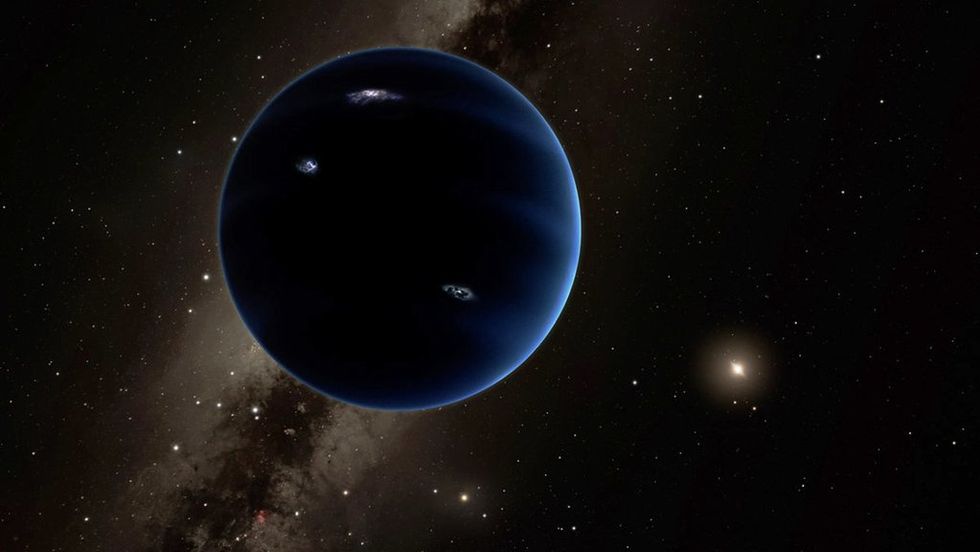
This artistic rendering shows the distant view from Planet Nine back towards the sun. The planet is thought to be gaseous, similar to Uranus and Neptune. Hypothetical lightning lights up the night side. (Credit: Caltech/R. Hurt)

Scientists at the California Institute of Technology announced Wednesday that they had uncovered evidence of a giant planet existing beyond Pluto in the outer solar system.
The planet, nicknamed Planet Nine, is estimated to have a mass approximately 10 times larger than Earth's and an orbit 20 times farther from the sun. It is estimated that it would take Planet Nine between 10,000 to 20,000 years to orbit the sun just one time.
"This would be a real ninth planet," researcher Mike Brown said in a press release. "There have only been two true planets discovered since ancient times, and this would be a third. It's a pretty substantial chunk of our solar system that's still out there to be found, which is pretty exciting."

Brown and co-researcher Konstantin Batygin came to their conclusion after examining the bizarre orbits of of more than a dozen distant objects in the Kuiper Belt.
"Basically it shouldn't happen randomly," Brown explained. "So we thought something else must be shaping these orbits."
[sharequote align="right"]"When we found that, my jaw sort of hit the floor."[/sharequote]
The researchers theorized on what could be causing the orbit and plugged a massive planet into a simulation which seemed to produce results similar to that of what they observed.
"Still, I was very skeptical," Batygin said. "I had never seen anything like this in celestial mechanics."
The scientists were convinced, however, when their simulations predicted additional orbits that have been seen.
"We plotted up the positions of those objects and their orbits, and they matched the simulations exactly," Brown said. "When we found that, my jaw sort of hit the floor."
Nevertheless, Batygin said the discovery really makes our solar system more normal. This is because most planets in other solar systems don't have a single orbital range and are much larger than Earth.
"One of the most startling discoveries about other planetary systems has been that the most common type of planet out there has a mass between that of Earth and that of Neptune," Batygin explained. "Until now, we've thought that the solar system was lacking in this most common type of planet. Maybe we're more normal after all."
—
Follow the author of this story on Twitter and Facebook: